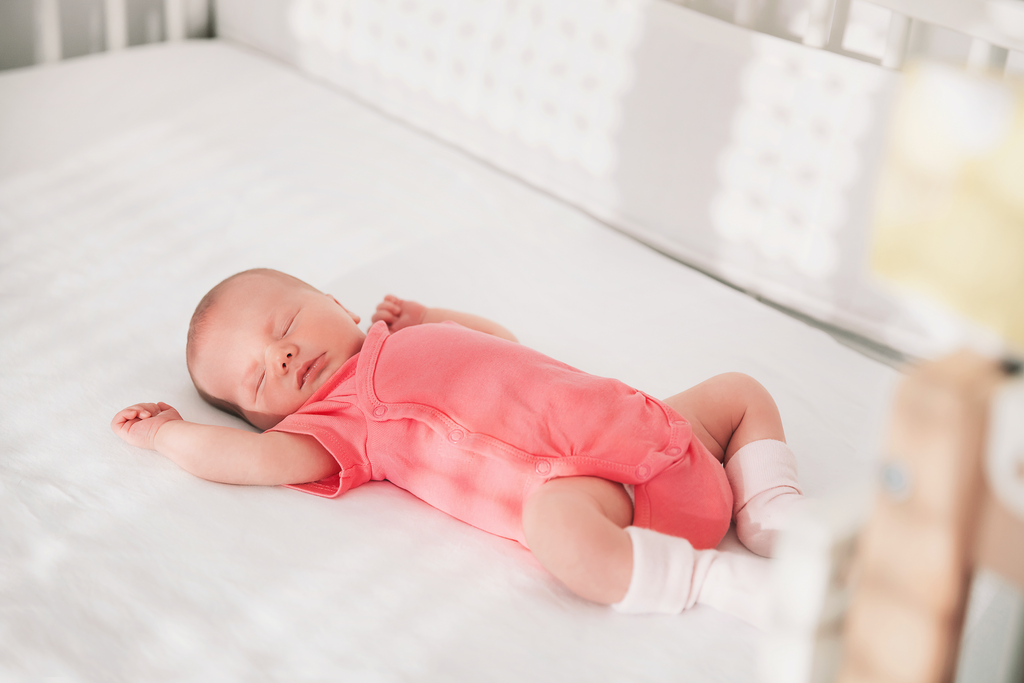
Sudden Infant Death Syndrome, or SIDS, is a scary reality that causes the death of 2300 babies in the United States each year. It is the unexplained death of an infant under one year old, and it normally happens during sleep. Unfortunately, the exact cause of it is unknown, but it is believed to be linked to a problem with the portion of a baby’s brain that tells it to wake up after falling asleep.
Even with mysteries of why this happens, there are a number of actions that you can take to lower the risks. Here are 20 steps to help prevent SIDS.
You & Those Around Your Baby
Get Parental Care
If you’re a new parent, do not be afraid to ask questions. You may not even know SIDS exists, and if you’re reading this, you’re on the right track. Talk to some professionals and do your research. Knowledge is key.
Don’t Smoke or Drink During Pregnancy
While drinking and smoking is bad for you in general, it is even worse for a developing baby. Remember that everything you eat, drink, and consume in any way is absorbed by your baby. While an adult human body can be more resilient, a developing body is not. Your baby does not have a choice in the matter, but you do. Smoking and drinking drastically increases the risk of SIDS and should be avoided.
Avoid Drugs or Other Controlled Substances During Pregnancy
While this should go without saying, drugs and other controlled substances should be absolutely avoided when pregnant. Not only will these substances harm you, but they will harm your baby as well. A whole host of health problems can arise for your baby, and SIDS risk is dramatically increased as well. If you need help, please call the Substance Abuse and Mental Health Services Administration (SAMHSA) at 1-800-662-HELP (4357).
Don’t Smoke Around an Infant
If you didn’t smoke during your pregnancy, the battle is not over after your baby is born. It is best practice to not smoke or allow others to smoke around your baby. If you must, please do it outside while your baby is supervised, and change your clothes before interacting with your child again.
Inform Your Caregivers
Now that you’re learning about SIDS, you have to make sure that whoever is taking care of your baby when you can’t does too! Your parents, significant other, or any other caregiver. This is YOUR baby. You should not insult the intelligence of the person you are talking to by bringing this up. If they care, they will understand your concern. Make sure your trust level is high.
Steps To Take With Baby
Now that all of that is out of that, let’s get into some of the actual steps. Make sure your baby sleeps on their back. Sleeping face down is not safe at all for a baby and will increase the risk of SIDS drastically.
Keep a Careful Watch During “Tummy Time”
“Tummy time” is important to help your baby develop strength, but it should be carefully supervised. While many other dangers could exist based off of wherever your child is during tummy time, your baby falling asleep could be one of them. In the event you see your baby start to get tired, and it’s nap time, move your baby to its crib or bassinet. Of course, back down!
Have a Firm Sleeping Area
A firm sleeping area is also important. Soft blankets, mattresses, and other surfaces can cause breathing for a baby to be difficult. While you want your baby to be comfortable, you also want your baby’s sleeping environment to be conducive to their body’s needs.
Have a Clear Sleeping Area
A clear sleeping area is just as important as a firm one. Anything in your baby’s crib could be a potential suffocation hazard. It is best practice having your baby’s sleep to just let it be your baby and a firm mattress.
Keep Baby Cool
Overheating can be terrible for a baby. While as adults we may just move a blanket away, a baby can’t do that, and their body can’t handle it. Keep your baby at a comfortable temperature. With lighter blankets and light weight sleepers like our knotted gowns.
Swaddling
Swaddling is one of the best and safest ways to get your baby ready for bed. Not only does it simulate the conditions of the womb, but it keeps your baby safe from unsupervised movement.
Plan When Traveling
If you need to travel with your newborn, you have to make sure that you adhere to the conditions of this list. That means you have to plan ahead. See if where you are going has accommodations for rent, or considering bringing a portable bassinet.
Move Sleeping Baby To Crib or Bassinet Right Away
A baby can tend to fall asleep anywhere: in a car seat, eating, tummy time, and so on. When you notice your baby has fallen asleep, get your baby to his or her crib as soon as you can. Lay your baby on their back in the obstruction free crib. Making sure your baby is always sleeping in this safe position will reduce the risk of SIDS.
Sleep In The Same Room
Keeping an eye on your baby is extremely important. One of the best ways to do this at night is have your baby sleep with you in the same room for at least six months. Don’t allow your baby to sleep in your bed with you! Adult beds can be dangerous enough, but you can be too when you sleep. Always have your baby sleep in a crib or bassinet. Speaking of which…
Baby Must Sleep Alone
While you may want to sleep with your baby to be protective, or even if it’s cute for a sibling or family pet to sleep with your baby, it really is not safe. When you or someone else sleeps with your baby, you run the risk of rolling around and causing potential suffocation. For a baby to be sleeping with someone else, that also means they are probably not on a firm surface free from other items. Be safe.
Breast Feed
If possible, try to breastfeed your baby for at least six months. It will reduce the risk of SIDS.
Allow a Pacifier
A pacifier can be a good risk reducer, but don’t allow it to have any type of strap or string on it. If you’re breastfeeding, wait until your baby is about 3 to 4 weeks old before introducing a pacifier.
Keep Up With Doctor Visits
Visiting the doctor regularly is always good for you baby. You can always talk to them about any abnormalities and differences in behavior. Doctors also may notice something you may have not.
Vaccines
There is no evidence that shows getting your baby immunized increases SIDS, so make sure you get it done.
Avoid Anti-SIDS Devices or “Sleep Safe”
You may have come across some products that claim to help with these conditions and more. If you have read the rest of this list, you can probably deduce that those go against what we talked about. Any addition to your baby’s sleeping space is a risk for suffocation
Sudden Infant Death Syndrome is a scary and serious thing. Following these 20 steps will greatly reduce the risk of SIDS for your baby. Always be safe and make note of any changes in behavior your baby may show. Tell a doctor immediately if you notice anything.

Leave a Reply